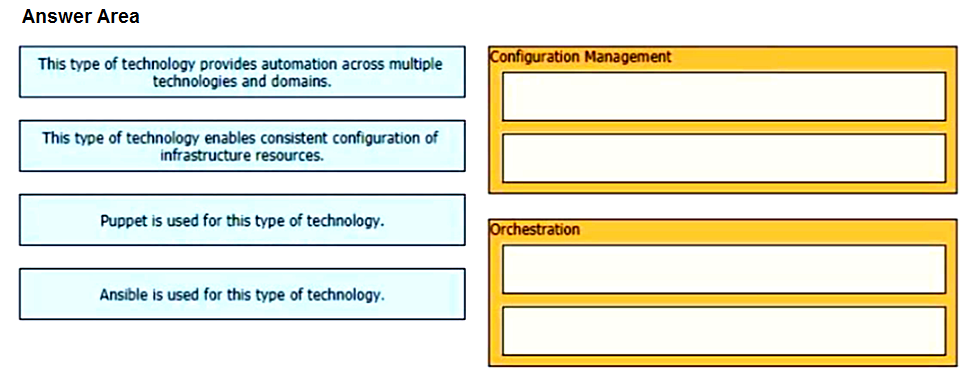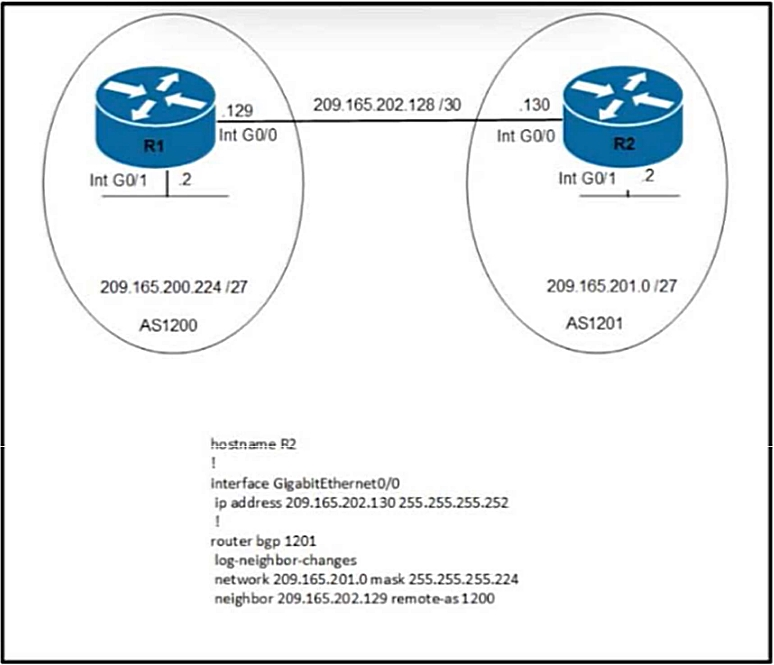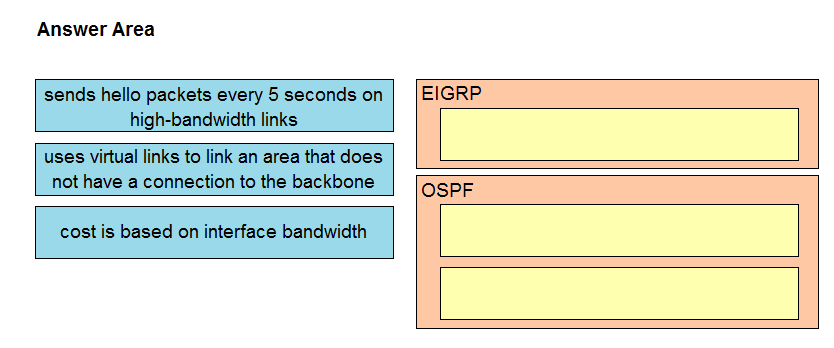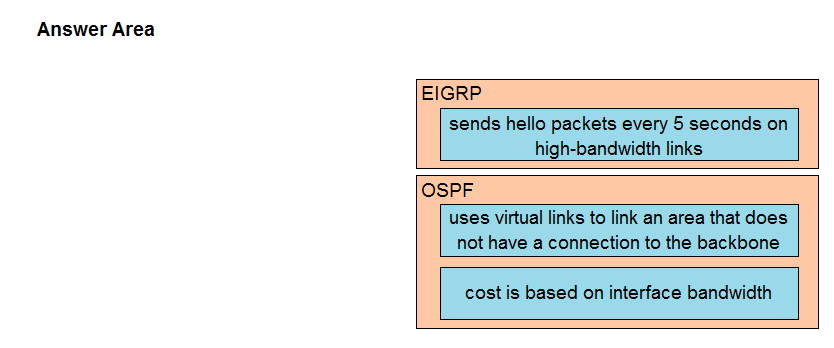What is an advantage of utilizing data models in a multivendor environment?
C
Reference:
https://www.cisco.com/c/en/us/td/docs/routers/ncs6000/software/ncs6k-7-4/programmability/configuration/guide/b-programmability-cg-ncs6000-74x/m- unified-data-models.pdf
How is a data modeling language used?
A
A network engineer is configuring OSPF on a router. The engineer wants to prevent having a route to 172.16.0.0/16 learned via OSPF in the routing table and configures a prefix list using the command ip prefix-list OFFICE seq 5 deny 172.16.0.0/16. Which two additional configuration commands must be applied to accomplish the goal? (Choose two.)
AB
DRAG DROP -
Drag and drop the characteristics from the left onto the technology types on the right.
Select and Place:


Refer to the exhibit. Which command set must be applied on R1 to establish a BGP neighborship with R2 and to allow communication from R1 to reach the networks?
A.
B.
C.
D.
B

Refer to the exhibit. Which command must be configured for RESTCONF to operate on port 8888?
C
Why would a log file contain a * next to the date?
D
What is one difference between EIGRP and OSPF?
A
DRAG DROP -
Drag and drop the characteristics from the left onto the routing protocols they describe on the right.
Select and Place:

A network engineer must configure a router to send logging messages to a syslog server based on these requirements:
* uses syslog IP address: 10.10.10.1
* uses a reliable protocol
* must not use any well-known TCP/UDP ports
Which configuration must be used?
A